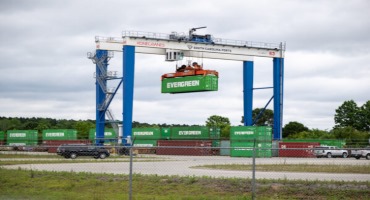This time of year, Fitzhugh Bethea III spends a lot of time in his truck. There aren’t many people he doesn’t know as he drives from the quiet town of Dillon to his farm. As he passes soybean, wheat, corn and cotton fields, he waves and nods at friends while keeping one eye on the road and the other on the crop conditions.
The Betheas settled in Dillon, South Carolina, in the 1700s. In nearly three centuries, you can say they’ve seen some history. Remnants of the revolutionary war and civil war can be seen as stories of the early revolutionaries and Sherman’s fiery March to the Sea are recounted by the locals.
Fitzhugh Bethea is the eighth generation to farm the ground in South Carolina and his children will be the ninth generation to live there.
These days much of Bethea’s free time is spent remodeling an old farmhouse built in the 1700s. The house isn’t the only renovation happening in the area, though. Farmers are seeing an economical renovation sparked by an inland port built several miles from Bethea’s farm.
The South Carolina Inland Port at Dillon benefits importers and exporters in the eastern Carolinas by providing a more efficient means of moving containers from a ship to an inland location. This is achieved through rail lines that can handle a large container volume while keeping hundreds of trucks off roads linking seaports and inland destinations.
The Dillon port uses CSX rail to and from the market, allowing cargo owners to control costs with maximum flexibility and minimal inland truck miles. This is especially attractive to exporters in the region because it provides a low-cost platform from which empty containers can be sourced and returned loaded for export in the fastest possible turn time.
Although Bethea doesn’t deliver his soybeans directly to the inland port several miles away, he still sees the economic benefits.
“If you include forestry, agriculture is the number one industry in South Carolina,” he says. But unfortunately, on a world stage or a U.S. stage, we’re just a blip on the market. What’s good for soybean farmers in the Midwest is good for soybean farmers in the Southeast.”
Bethea points to the thousands of uses for the soybeans that he grows on his farm as the reason he is still farming. In 2022, South Carolina farmers planted 405,000 acres of soybeans and produced 14,430,000 bushels. The total value of soybeans in South Carolina in 2022 was $213,564,000.
“Anytime there’s a new use developed through the checkoff, it ripples down to all soybean farmers, not just the Southeast, not just the Midwest,” Bethea says. “With margins being so small now on all commodities — wheat, corn, soybeans, cotton and oats — if we can get more consumption or another market for a product that we grow, it’s really gonna help out — a two percent change is a world of difference. Farming today is about the margins, and they just keep getting tighter.”
The economic activity at the inland port is driving business in the area. Local soybean buyers have been using the empty containers from the port of Charleston to ship soybeans back to customers in Southeast Asia. That has helped Bethea and other farmers capitalize on the basis in the area.
Click here to see more...